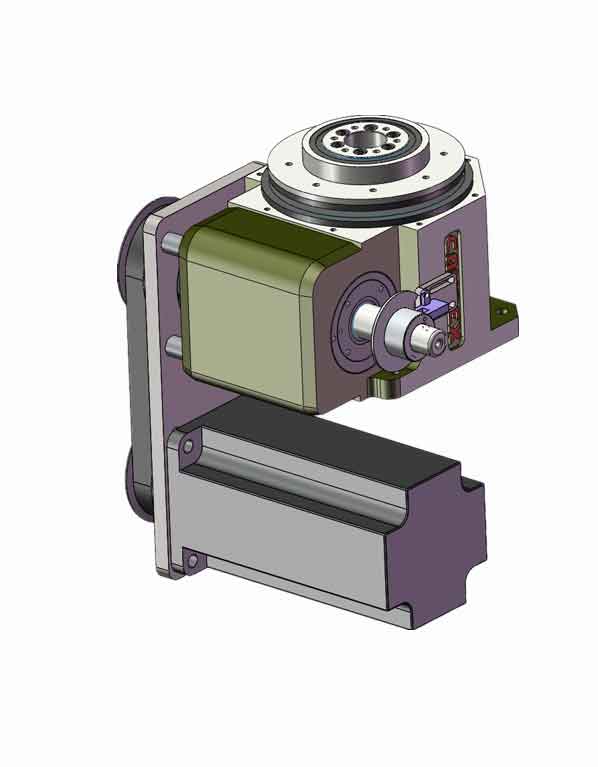Those who are concerned about this kind of problem should not know much about the output of the DT-type indexer, because the large-through-hole indexer involves the installation method of the turntable and the connection structure designed in the early stage. Here is a detailed introduction for everyone.
As shown in the above figure, the large flange surface of the output end is the part that connects to the turntable. The flange structure ensures the stability of the machine during connection and rotation. In addition, the 8 fixed screws ensure that the indexer is in the indexing process. No additional errors will be generated due to the mechanical connection. In addition, the large flange is also one of the advantages of the platform indexer that can withstand heavy loads.
The fixed surface of the output flange is mainly used for design requirements, and some use the fixed end of the indexer to accept and install the auxiliary mechanism required in the automated processing, which is also not available in other indexers. One machine with multiple uses, on the one hand, is easy to design, save space, save energy consumption, and make greater use of the multi-faceted functions and advantages of the indexer.
In the same way, the through hole of the DT type indexer is convenient for large-scale automatic turntable machines, which require water, electricity, gas pipelines, or other mechanical facilities.
The rotating part of the DT indexer also includes the input part. The two ends of the coaxial input ensure the flexibility of the design. Sometimes because of space requirements, it is necessary to install the electricity on the left or right side. In addition, there are also smart designers. Use a motor, with the aid of a coaxial input shaft for transmission of other requirements. In short, the wisdom of mechanical design comes from continuous innovation. I believe that the application of cam indexers will be accepted by more design agencies because of its own advantages.
TAG:

